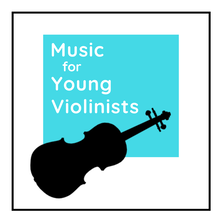|
We have all either been the student or heard the student who gets into a loop with their piece due to missing a leading note that goes to a specific ending. Getting lost in the form of music when playing the violin is very common. Learn how to memorize your music with the five tips below. 1- FACE ONE WALL PER SECTION/ENDING: 1st - Divide the form of the piece into sections. 2nd - Face one wall per section while listening to the piece of music or singing it. 3rd - When you have successfully been able to face one wall per section without your instrument several times then add your violin in and play while facing one wall per section. TIPS: * Do not attempt on violin until successful with doing while listening for several times. * This is especially useful for younger musicians who have an existing need to incorporate movement into their curriculum. WHY THIS WORKS: Movement helps to connect mental constructs in the brain. Moving will also help to cross the corpus callosum which will deepen memory. 2- ANALYSIS: Sit down, away from the violin and analyze what makes the endings the same and what makes them different. Students need left brain information like this to balance the right brain listening and playing by ear. NOTE: If you have never done a form analysis before first go back to some early repertoire such as Twinkle, Twinkle Little Star and label the A-B-B-A form of this piece. 3- IMAGINATION ANCHORS: Once you have assessed the form of the piece now you can begin to assign a story, character, color or emotion to the different endings. The more personal this is for the player, the better it will stick in their memory. NOTE: The story does not even have to make sense, this is the neat thing about the way our minds work. Silly, weird and wacky stories are perfect for optimizing our memory. 4- ADD DETAILS: We started in the left brain organizing the form of the piece. Then we utilized our right brain by adding in a story or emotion, etc. Now we can go back to our left brain and assign specific dynamics or articulations to either the different endings that were creating the original loop or any part of the music that still is not sticking in the player's memory. If the violinist is on auto-pilot having played the piece incorrectly for some time, then they will need details like these to be taken out of this operating mode and engage the full capacity of the brain to create the successful memory of the music. 5- MAKE HARD WORK FUN: Making hard work fun is a secret to success for everything in life whether it be violin practice, cleaning your kitchen or learning algebra! Some ideas to help engage the fun factor include:
How do you memorize music? How do you make hard work fun?
Please let us know in the comments below, thanks!
2 Comments
|
Categories
All
Archives
February 2024
AuthorHi! It's me, Heather. I absolutely love working on the Music for Young Violinists project and all the many facets: blogging, website, music, teaching materials, freebies, videos, newsletter and giveaway contests. The best part is connecting with you so feel free to drop me a line. You can learn more about me on the "ABOUT" page. Thanks! |


 RSS Feed
RSS Feed
